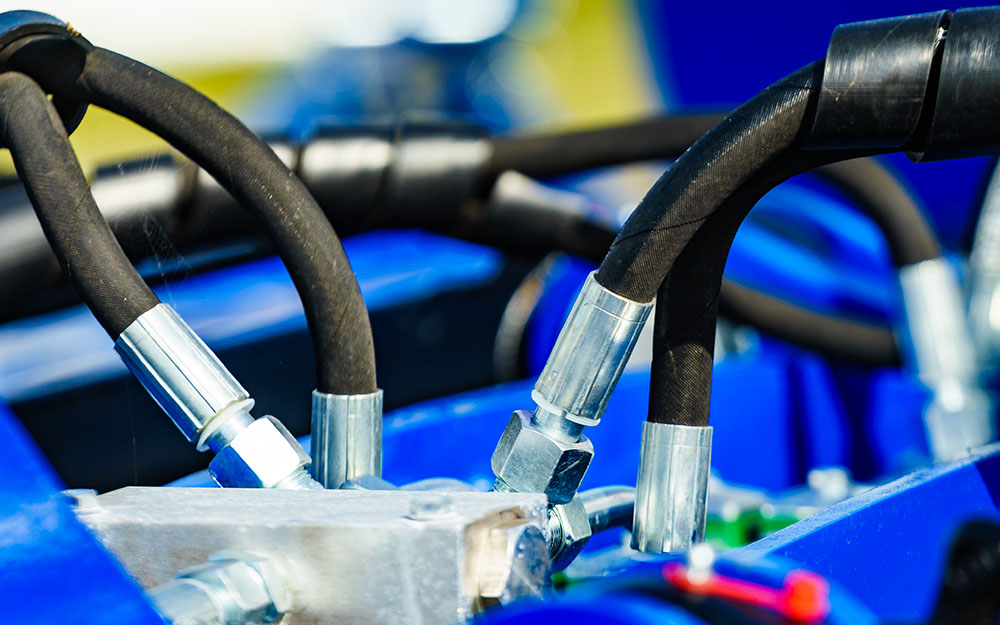We at Higginson manufacture a whole lot of our EconoMAX® dump truck cylinders. Our industry-leading cylinder withstands 250 PSI, which is much higher than your average pneumatic cylinder rated at just 150 PSI or less. I've personally tested our EconoMAX® cylinder to 1500 PSI using hydraulic oil, and other than a leaking end seal, it looked no worse for damage. Regardless, 250 PSI isn’t high pressure in the hydraulic realm. Standard hydraulic pressure for industrial applications averages 3000 PSI, while advanced mobile machinery operates upwards of 6000 PSI.
We also manufacture NFPA hydraulic cylinders, rated for 3000 PSI depending on the bore and mount, but we’ve also produced custom 5000 PSI cylinders for various applications. But compared to our Amtec Hydraclamp division, even 5000 PSI is nothing to brag. Amtec makes hydraulic nuts and clamps, mostly for the steel industry. These hydraulic nuts used for steel processing, casting, rolling and other steel production lines cap at 10,000 PSI operating pressure. Now we’re talking.
So what does it take for a hydraulic component to handle 10,000 PSI … and not just our Amtec hydraulic nuts, but any component? Here are my top five requirements for high-pressure hydraulic components to effectively handle their role without grenading into shrapnel at 10,000 PSI (700 bar):
- High quality steel alloys must be employed. 4140 chromoly is standard affair raw material for high-pressure hydraulic applications. It's durable steel, able to resist fatigue without failure, and this alloy is the number one choice for any high-pressure hydraulic cylinder, manifold, pump or valve. It’s also the alloy of choice for Amtec hydraulic nuts.
- Once your 4140 components are machined, they are hardened. Hardening improves the toughness of the surface of the metal, which helps the metal resist dents, dings and any contamination related damage. The high-pressure fluid forces contamination through gaps with higher energy potential, so a hard surface prevents that contamination from scoring the metal's surface. Because high-pressure fluid leaks at a higher rate, any such surface imperfection reduces the pressure capacity of the component.
- Chemical treatments, such as carbonitriding, also increase the surface hardness of metals. The process involves the introduction of extra molecules into the surface of the metal, bolstering the surface hardness as more atoms are stuffed between the molecular gaps to increase rigidity. This treatment also improves corrosion resistance because water is no longer able to penetrate the steel grain structure. Chrome surface finishes also improve surface hardness, and luckily most rod material used for high-pressure hydraulic cylinders already comes chromed.
- High-quality sealing technology, such as advanced polyurethane U-cups, withstand high pressure reliably. Materials such as Buna-nitrile or Viton are too soft, resulting in their quick breakdown under cycles of high pressure. High velocity is especially tricky for softer seals to handle, as the pressure combined with high friction tends to extrude the seal through even the smallest of gaps. Amtec uses a proprietary custom dual durometer U-cup design. With a softer polyurethane lip combined with a harder durometer heel, this single seal reduces the requirement for a backup ring.
- The gap between two separate components requiring the sealing is called the extrusion gap, or E-gap. The E-gap may be stationary, as with the end seal keeps fluid from exiting a hydraulic cylinder past the barrel and cap, but could also be dynamic like the gap between the piston and barrel of that same cylinder. The smaller the E-gap, the less chance any polymer can be forced through the gap under pressure. When you’re talking about 10,000 PSI, E-gaps must be as tight as possible to provide no easy path for the polymer to exit. The attached image is a seal from Amtec’s competitor, which you can has been nibbled away through repeated high-pressure cycles through a too-wide E-gap.

If you have any high-pressure hydraulic applications in the works, and require Higginson's expertise, get in touch. Don't forget we distribute Dynex high-pressure hydraulic pumps and valves, providing a comprehensive high-pressure source of hydraulics for the most demanding hydraulic applications out there.

